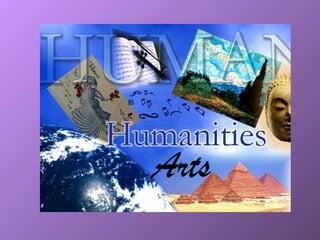The humanities are about human beings, their culture and intellectual achievements. They include subjects like philosophy, history, literature, religion, and art that explore what it means to be human. Art specifically probes into life's purpose and meaning by making people think abstractly in ways that help reflect on the meaning of life. The humanities seek to understand humanity and its diverse expressions through disciplined study of areas like art, religion, music, dance, drama, and literature.




































































